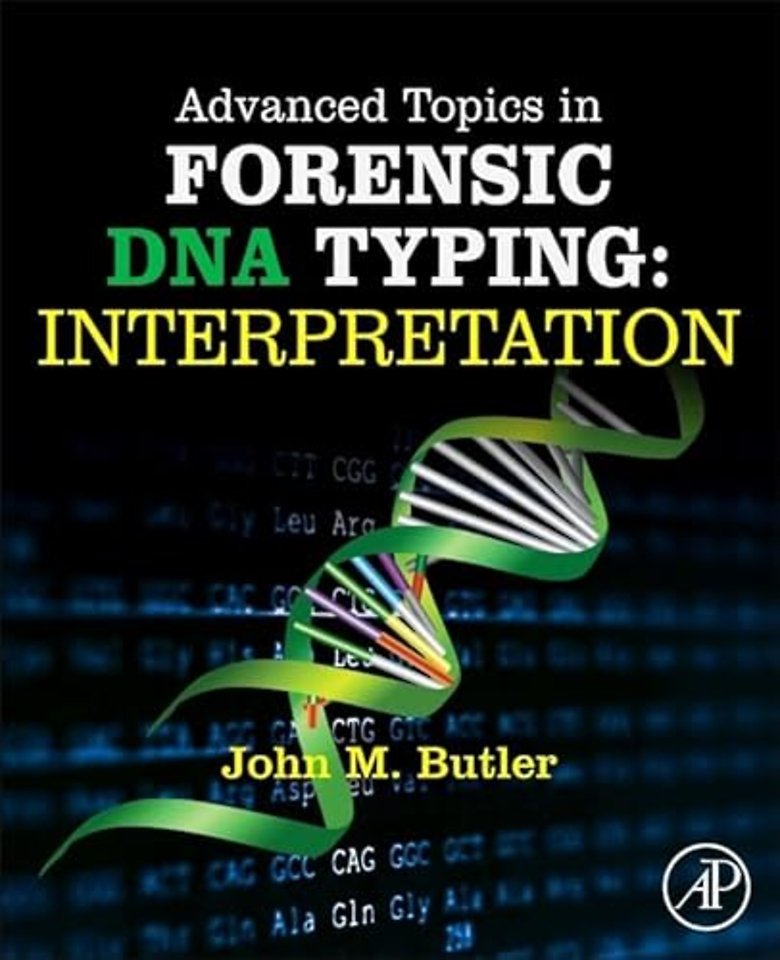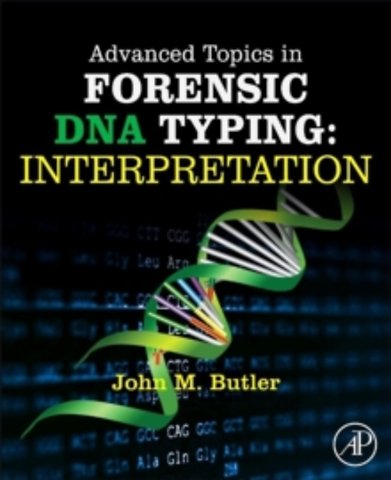



John M. Butler is a NIST Fellow and Special Assistant to the Director for Forensic Science, Office of Special Programs, at the U.
Meer over John ButlerAdvanced Topics in Forensic DNA Typing: Interpretation
Samenvatting
'Advanced Topics in Forensic DNA Typing: Interpretation' builds upon the previous two editions of John Butler’s internationally acclaimed Forensic DNA Typing textbook with forensic DNA analysts as its primary audience. Intended as a third-edition companion to the Fundamentals of Forensic DNA Typing volume published in 2010 and Advanced Topics in Forensic DNA Typing: Methodology published in 2012, this book contains 16 chapters with 4 appendices providing up-to-date coverage of essential topics in this important field. Over 80 % of the content of this book is new compared to previous editions.
Key Features
- Provides forensic DNA analysts coverage of the crucial topic of DNA mixture interpretation and statistical analysis of DNA evidence
- Worked mixture examples illustrate the impact of different statistical approaches for reporting results
- Includes allele frequencies for 24 commonly used autosomal STR loci, the revised Quality Assurance Standards which went into effect September 2011
Researchers and practitioners in forensic DNA analysis, forensic scientists; legal professionals, military, private and public forensic laboratories, forensic science graduate and post-graduate students.
Specificaties
Inhoudsopgave
Dedication
Foreword
Introduction
Acknowledgments
About the Author
Section I. Data Interpretation
1. Data Interpretation Overview
Purpose of This Book
The Interpretation Process
Characteristics of Ideal Data
Guidance for DNA Interpretation
A Match or not a Match: That is the Question…
STR Loci, Kits, and Population Data
Summary
2. Data, Models, Thresholds
Data Collection in ABI Genetic Analyzers
Models
Thresholds Used in STR Typing
Setting and Using Analytical Thresholds
3. STR Alleles and Amplification Artifacts
Introduction
Overview of the STR Typing Process
STR Alleles and Their Measurement
Variant and “Off-Ladder” Alleles
Artifacts of STR Allele Amplification
Non-Template Addition
Stutter Products
Null (Silent) Alleles
4. Allele, and Concordance Studies
Importance of Genotypes vs. Alleles
Peak Height Ratios
Stochastic Thresholds and Allele Drop-out
Concordance Studies and Null Alleles
5. STR Profiles: Multiplex PCR, Tri-Alleles, Amelogenin, and Partial Profiles
Introduction
Multiplex PCR Challenges
STR Profile Evaluation
Tri-Allelic Patterns
Gender Identification with Amelogenin
Partial DNA Profiles
6. DNA Mixtures
General Information
Tools for Mixture Interpretation
Elements of Mixture Interpretation
Resources and Guidance on Mixture Interpretation
Complicating Factors in Mixture Deconvolution
7. Low-Level DNA and Complex Mixtures
Interpretation Challenges with Low Template DNA
Low-Quantity and Low-Quality DNA
Probabilistic Genotyping
High-Density SNP Arrays?
More Poor-Quality Samples Being Submitted
A Complexity Threshold?
8. Troubleshooting Data Collection
Introduction
Principles and Processes Involved with Capillary Electrophoresis
Instrument Maintenance & Common Problems
Recommended Steps for Troubleshooting
Summary
Section II. Statistical Interpretation
9. Statistical Interpretation Overview
Role of Statistics in Forensic DNA
Probability
Statistics
10. STR Population Data Analysis
Introductory Genetic Principles
Population Data
Genetic Models and Formulas
Practical Considerations
Summary
11. DNA Profile Frequency Estimates and Match Probabilities
Introduction
Profile Frequency Estimate Calculations
Likelihood Ratio
Source Attribution
Issues with DNA Profile Frequency Estimates
Summary
12. DNA Mixture Statistics
Introduction
Different Statistical Approaches to Mixture Interpretation
Reporting Match Probabilities on Deduced Components
Random Man not Excluded (RMNE)
Likelihood Ratios
Additional Topics
13. Coping with Potential Missing Alleles
Introduction to the Problem
Probabilistic Genotyping – A Way Forward
14. Relationship Testing: Kinship Statistics
Introduction
Parentage Testing
Mutations and Mutation Rates
Other Topics with Parentage Testing
Missing Persons & Disaster Victim Identification
Complex Kinship Analysis
15. Lineage Marker Statistics
Lineage Marker Inheritance Patterns
Guidance on Interpretation
Generating Lineage Marker Haplotypes
Population Databases for Lineage Markers
Genetic Models and Reporting
Summary Thoughts
16. Laboratory Reports: Communicating Results and Conclusions
Introduction
Drawing Conclusions
Report Writing
Report & Case Review
Report Release
Report Comprehension and Potential Misuse
Summary
Appendix 1. STR Allele Frequencies from U.S. Population Data
Appendix 2. NRC I & NRC II Recommendations
Appendix 3. DAB Recommendations on Statistics
Appendix 4. Worked Mixture Example
Index
Anderen die dit boek kochten, kochten ook
Net verschenen
Rubrieken
- aanbestedingsrecht
- aansprakelijkheids- en verzekeringsrecht
- accountancy
- algemeen juridisch
- arbeidsrecht
- bank- en effectenrecht
- bestuursrecht
- bouwrecht
- burgerlijk recht en procesrecht
- europees-internationaal recht
- fiscaal recht
- gezondheidsrecht
- insolventierecht
- intellectuele eigendom en ict-recht
- management
- mens en maatschappij
- milieu- en omgevingsrecht
- notarieel recht
- ondernemingsrecht
- pensioenrecht
- personen- en familierecht
- sociale zekerheidsrecht
- staatsrecht
- strafrecht en criminologie
- vastgoed- en huurrecht
- vreemdelingenrecht





